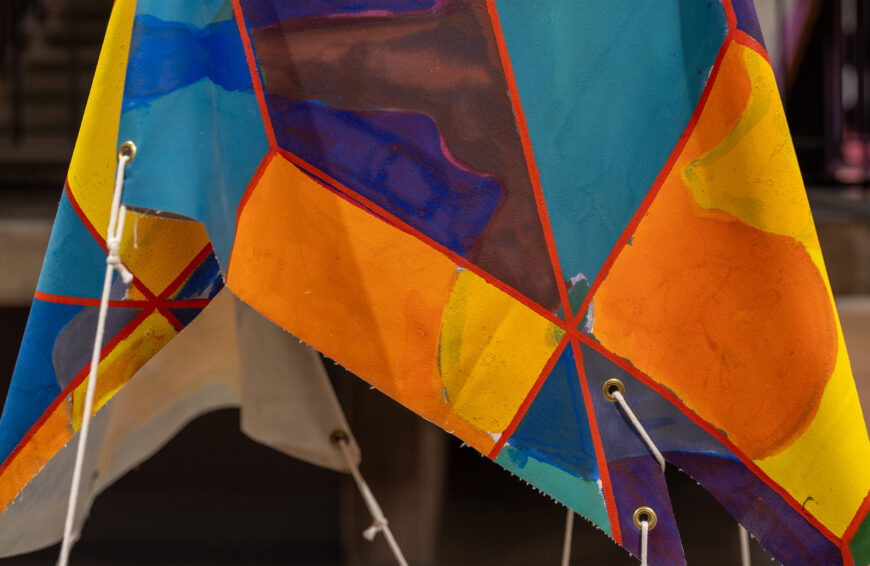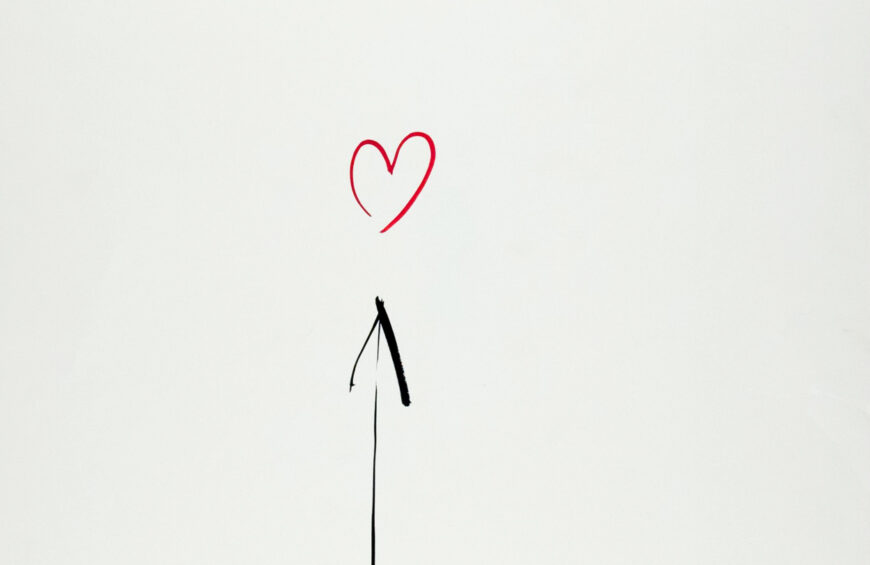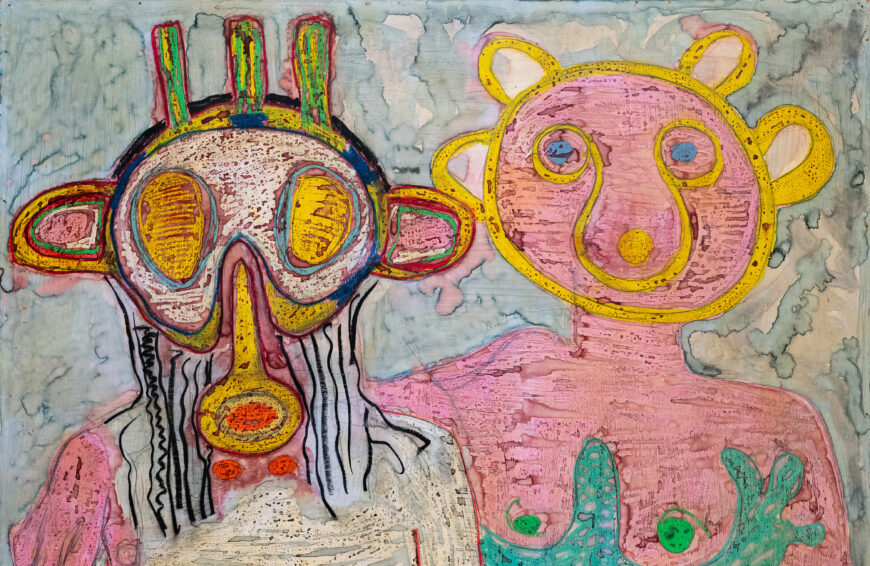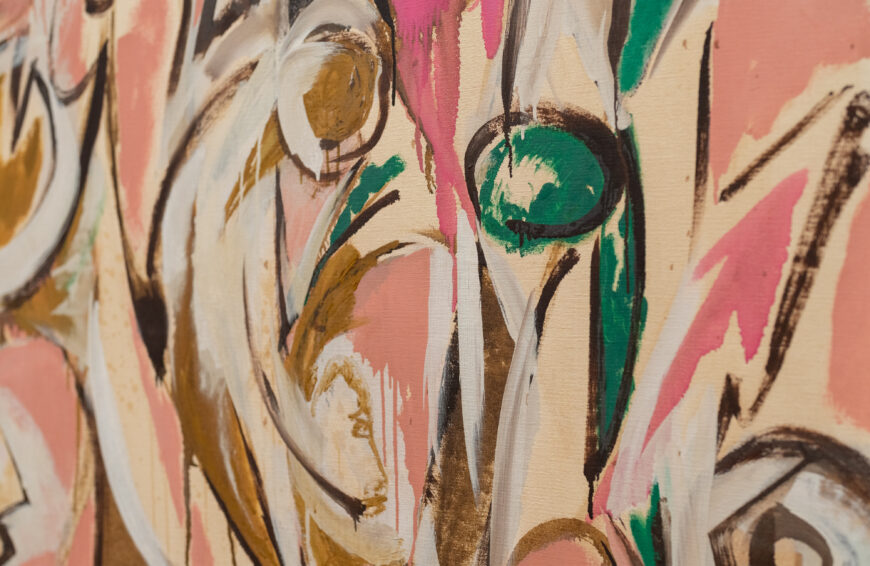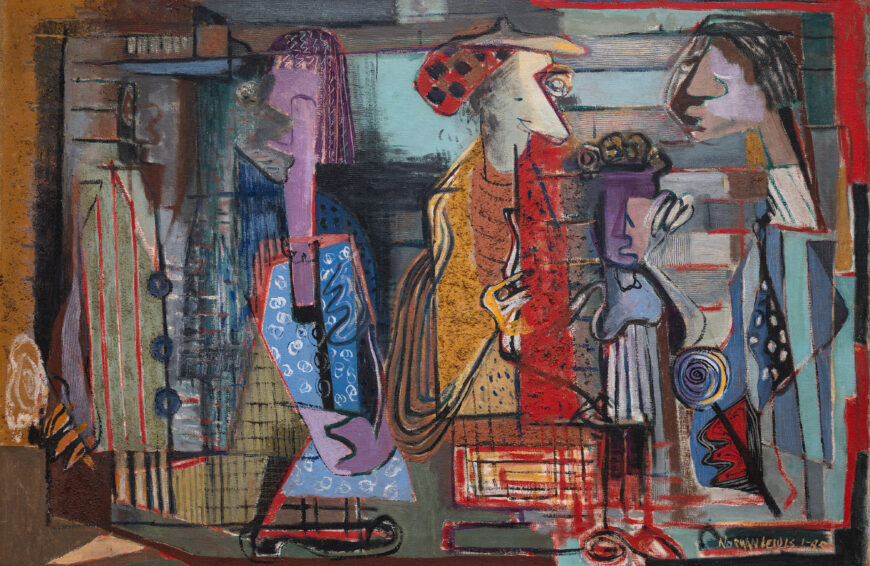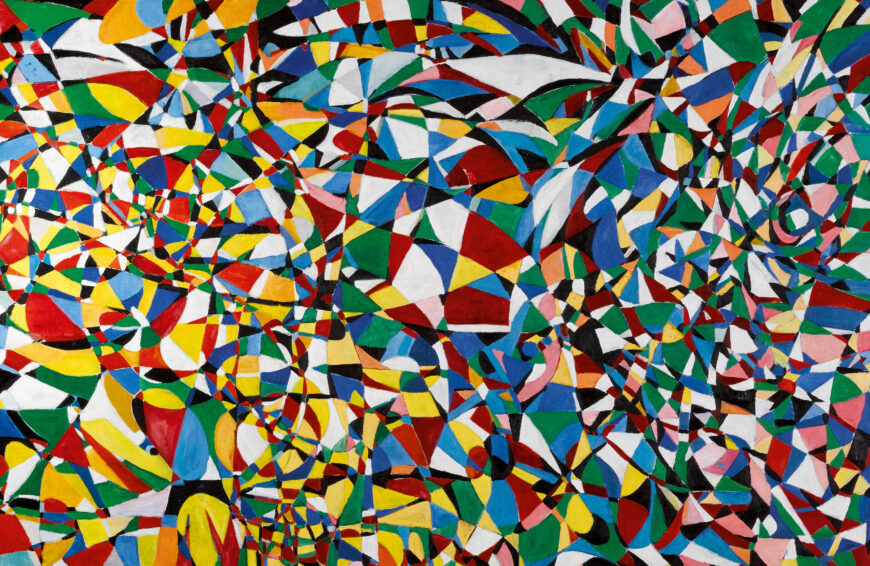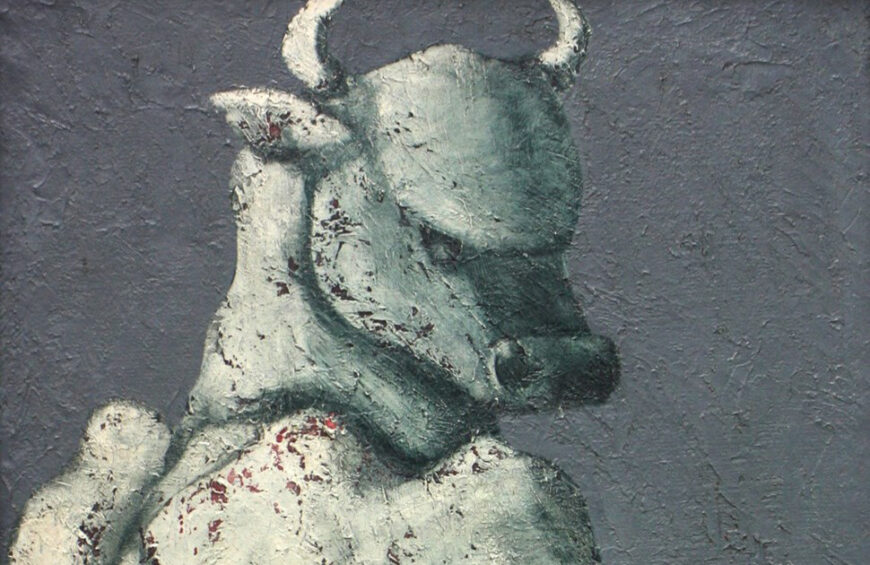White, red, and aqua panels create an entire universe of space, absence, and form.
Conrad Marca-Relli, Cristobal, 1962, painted vinyl collage, 189.9 x 162.6 cm (Art Bridges) © Archivio Marca-Relli, Parma. Speakers: Bill Conger, Chief Curator, Peoria Riverfront Museum and Dr. Steven Zucker, Smarthistory
0:00:05.1 Steven Zucker: We’re at the Peoria Riverfront Museum looking at a large, well, I was about to call it a canvas, but it’s not exactly that. This is work by an American artist named Conrad Marca-Relli. He was a first generation Abstract Expressionist. But this does not look like Pollock’s drips or de Kooning’s brushwork. This is collage.
0:00:26.3 Bill Conger: The lack of a canvas is so unusual for a first generation Abstract Expressionist. Somehow along the way, Marca-Relli turned in his paintbrushes and oils and latexes for these massive sheets of vinyl, which are riveted to the surface.
0:00:45.6 Steven Zucker: At first, it seems simple. We have a number of what appear to be thick sheets of material overlaid, mostly red, but also this stark white and this deep aqua. But the longer you look at it, the more complex this surface becomes. One of the things that begins to fascinate me is how space is represented. It is both emphatically flat in the way that collage is always emphatically flat, because it announces, these are sheets, these are things that are laid over each other. But at the same time, there’s this incredible sense of deep space.
0:01:22.0 Bill Conger: The white panel could be interpreted as complete absence. This could be a hole in the surface. The blue could be something advancing. It also creates a bit of a barrier of sorts. It’s a wall.
0:01:35.4 Steven Zucker: It is a wall. And in fact, the famous inception of the artist’s turn from painting to collage took place in the 1950s when Marca-Relli was in Mexico. He was fascinated by the light on the adobe walls, but he ran out of paint, and so he began to rip up and to cut canvas and to apply that, and loved the way that raw canvas began to replicate the textures of those surfaces that he was seeing around him. And so there is something architectural here.
0:02:05.0 Bill Conger: And this is essentially a very simple color scheme of red, white, and blue. You describe it as aqua, and I agree with you. But we are staring at this blue for so long against the red, I think it’s turning greener as we stand here. There is this incredible retinal transformation that the piece, as quiet as it is, is really affecting us physically.
0:02:27.6 Steven Zucker: The overlapping casts shadow, and those shadows create bits of separation between those colors, so that the shadow almost functions as the framing device that we might see, for example, in a Mondrian.
0:02:40.1 Bill Conger: It really becomes line, doesn’t it? It’s as if the shadow is a part of his drawing. Even though we’re looking at large sheets just laid upon each other, the space between is so important in these. He allows for little areas to overlap, yet a slight corner to be exposed. So there’s this wonderful, mysterious music of intersections of form and color and line and material that build into something much bigger than itself.
0:03:11.0 Steven Zucker: And what the artist did was, in a sense, cut and tear pieces of vinyl as a kind of improvisation that is not that different from Pollock creating his dancing skeins of paint across the surface of the canvas.
0:03:24.8 Bill Conger: I feel like it’s a performance. He also connects to the future as well. I see Ellsworth Kelly in this.
0:03:31.6 Steven Zucker: But the collage does not exist entirely by itself. The artist titled it. It’s called Cristobal, the Spanish name for Christopher Columbus. But it’s also a reference to a ship in the Spanish navy that was sunk by U.S. forces during the Spanish-American War in the south of Cuba. In fact, it was the last of the Spanish fleet to be sunk. And so that opens up a series of questions. Is there a historical reference here, or is the intent almost poetic, that it is a kind of historical overlay?
0:04:03.0 Bill Conger: I begin to see this as not only a point of possibility, but a point of destruction. There is a remnant quality to this, that not only can we see the way it’s put together, we can see these little rivets that hold this piece. We also can imagine that we could pull these sheets back off, that it is available to us as a potential destructive act.
0:04:28.9 Steven Zucker: And that physicality actually reminds me of the surface of the hull of a ship, where metal plates are riveted together to be watertight. But might they leak? Might they spring apart? And there is that tension here. One of the things that strikes me about the composition as a whole is that it’s dirty. And this is not a conservation issue. This is intentional and therefore does recall a kind of industrial material. And in that way, this work, more than painting, is of our industrial cultural moment. These are just panels of vinyl that have been applied to a surface, and yet it’s creating an entire universe of space and absence and form, and it is visually exciting in a way that is completely unexpected.



